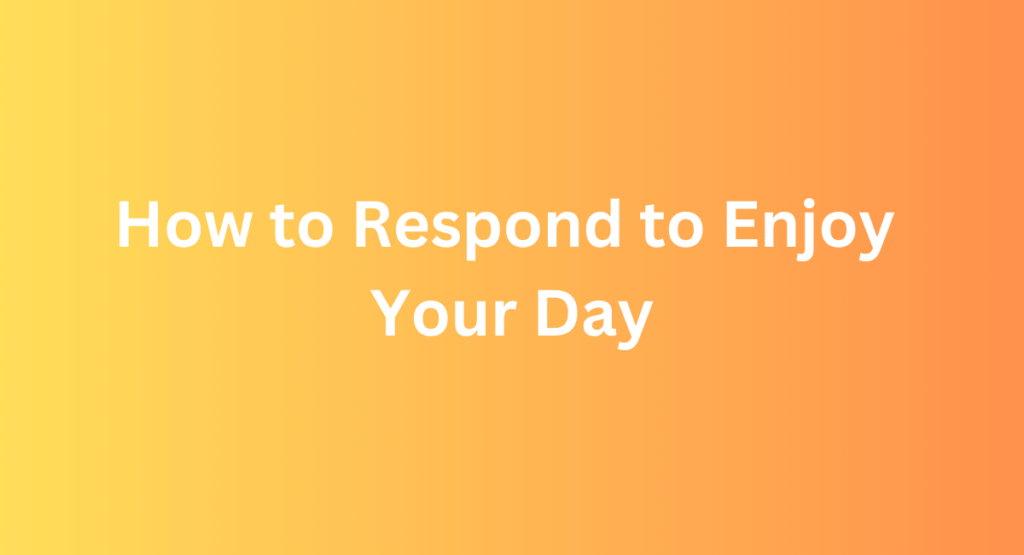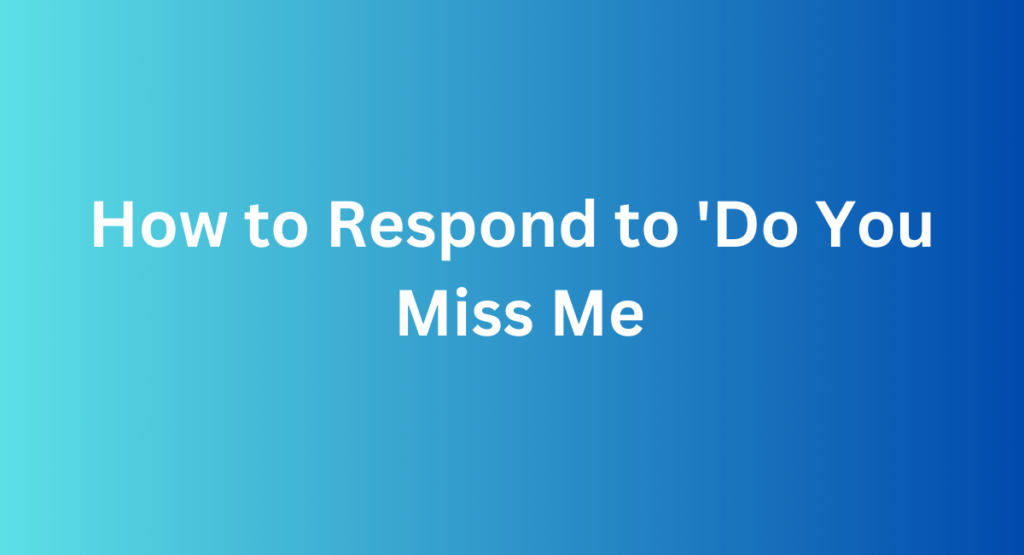To respond to “WTW,” simply say “WTW” back or ask, “What’s the word?” This is a casual greeting.
WTW, short for “What’s the word,” is a casual way to ask what’s happening or what’s new. It’s often used in text messages and social media chats. Responding to WTW is easy; you can either repeat “WTW” or follow up with a question.
This keeps the conversation going and shows you’re engaged. Knowing how to respond can help you connect better with friends and stay updated on their lives. Using popular slang terms like WTW can make communication more relatable and fun.
Common Wtw Scenarios
Responding to “Wtw” (What’s the Word) can vary based on context. Here, we explore common scenarios where “Wtw” might pop up. These scenarios range from casual conversations to professional settings. Understanding how to respond appropriately can enhance your communication skills.
Casual Conversations
In casual settings, “Wtw” often means someone wants to chat. They might be asking about your day or plans.
- Daily Catch-Up: Share what you are doing today.
- Plans for the Evening: Talk about your evening plans.
- Hobbies: Mention any hobbies or activities.
Here are some examples:
| Scenario | Response |
|---|---|
| A friend asks “Wtw” after school | “Just finished homework, thinking of playing soccer.” |
| Neighbor says “Wtw” at the park | “Enjoying the weather might go for a walk.” |
Professional Settings
In professional settings, “Wtw” can have a different tone. It might indicate a need for updates or project status. Responding professionally is key.
- Project Update: Give a brief status of your project.
- Meeting Plans: Inform about upcoming meetings.
- Task Progress: Share what tasks you are working on.
Here are some examples:
| Scenario | Response |
|---|---|
| The manager asks “Wtw” on a project | “Currently finalizing the report, will submit by EOD.” |
| A colleague says “Wtw” during a break | “Preparing for the client meeting tomorrow.” |
Crafting The Perfect Response
Responding to “wtw” (What’s the Word) can be tricky. The right response ensures effective communication and builds rapport. Here’s how to craft the perfect reply.
Tone And Context
Understanding the tone and context of the conversation is crucial. Consider the setting: is it a casual chat or a formal discussion?
- For casual chats, keep the tone light and friendly.
- In formal discussions, maintain professionalism.
Consider the sender’s mood and relationship with you. Tailor your response to match these elements. A mismatch in tone can cause misunderstandings.
Balancing Formality
Finding the right balance between formality and informality is key. Here’s a simple guide:
| Situation | Formality Level |
|---|---|
| Chat with friends | Informal |
| Work email | Formal |
| Texting a colleague | Semi-formal |
For friends, you might say, “Hey, nothing much. You?” For a colleague, “Hello, working on the project. How about you?”
Always adjust based on the context. This ensures your response is appropriate and well-received.
Do’s And Don’ts
Responding to “Wtw” or “What’s the Word” can be tricky. Knowing the right approach ensures your message is clear. Below are some do’s and don’ts to keep in mind.
What To Avoid
Here are some things you should avoid when responding:
- Avoid being vague: Clear responses are always better.
- Don’t use slang: Not everyone understands all slang terms.
- Avoid long messages: Keep it short and to the point.
- Don’t ignore the message: Always respond to keep the conversation going.
Best Practices
Follow these best practices for a better response:
- Be concise: Short messages are easier to read.
- Stay relevant: Make sure your response matches the context.
- Use proper grammar: Good grammar makes your message clear.
- Ask questions: Keep the conversation engaging.
Here is a table summarizing the do’s and don’ts:
| Do’s | Don’ts |
|---|---|
| Be concise | Avoid being vague |
| Stay relevant | Don’t use slang |
| Use proper grammar | Avoid long messages |
| Ask questions | Don’t ignore the message |
Examples Of Effective Responses
Responding to “WTW” (What’s the Word) texts can sometimes be challenging. Below are some effective responses to ensure smooth and engaging conversations. Whether you prefer keeping things simple or adding a touch of humor, these examples will help you master your replies.
Simple And Direct
Sometimes, a straightforward response is the best way to keep the conversation flowing. Here are some examples:
- “Just chilling. You?”
- “Not much, just working.”
- “Hey, just finished a workout!”
- “Reading a book. You?”
Using simple, direct replies makes your conversations quick and to the point.
Humorous Replies
Adding humor to your responses can make your conversation more engaging and enjoyable. Here are some fun examples:
- “Trying to become a meme lord.”
- “Just saved the world. What about you?”
- “Searching for my lost socks.”
- “Counting stars. How about you?”
Humorous replies can lighten the mood and keep the conversation lively.
In both cases, the key is to be genuine and keep the conversation interesting. Whether you choose simple and direct responses or humorous ones, the goal is to keep the dialogue engaging. Happy texting!
Leveraging Technology
In today’s digital age, technology offers many ways to communicate. Responding to “WTW” (What’s the Word) can be simple and fun. Leveraging technology can make your responses more engaging and interactive.
Using Emojis
Emojis are a great way to express your feelings quickly. They can add emotion to your text and make it more lively.
- Use a smiley face to show happiness.
- Send a thumbs up for approval.
- A heart emoji can show love or care.
Here is a simple example:
Friend: WTW?
Voice Messages
Voice messages can make your response more personal. Your friend can hear your tone and emotion.
Sending a voice message is easy. Most messaging apps have a microphone icon. Press and hold it to record your message.
- Open the chat with your friend.
- Press the microphone icon to start recording.
- Speak your message.
- Release the button to send the message.
Voice messages can be more engaging than text. You can express joy, excitement, or even humor through your voice.
| Method | Advantages |
|---|---|
| Using Emojis |
|
| Voice Messages |
|
Adapting To Different Platforms
Responding to Wtw can vary based on the platform you use. Knowing how to adapt ensures clear and effective communication.
Text Vs. Social Media
Texts and social media posts have different norms. In texts, keep your messages short and direct. Use emojis to express emotions. Here is a simple table to show the differences:
| Platform | Response Style |
|---|---|
| Text | Short, direct, emoji-friendly |
| Social Media | Engaging, hashtags, mentions |
On social media, responses should be engaging. Use hashtags and mentions to increase visibility.
Email Etiquette
Emails require a more formal tone. Start with a polite greeting. Use complete sentences and proper punctuation. Here are some tips:
- Start with “Hello” or “Hi [Name],”.
- Keep the email clear and concise.
- End with a polite closing, like “Best regards”.
Remember to proofread your email before sending it. This ensures clarity and professionalism.
Cultural Sensitivity
Responding to “WTW” (What’s the Word) requires cultural sensitivity. Understanding cultural nuances helps you respond appropriately. Different cultures have different communication styles. This section will guide you through these nuances.
Understanding Nuances
Every culture has its unique communication styles. Some cultures prefer direct communication. Others may favor indirect expressions. Knowing this helps you respond better. For instance, in some cultures, being direct might seem rude. In others, it shows honesty.
Here is a table for a better understanding:
| Culture | Communication Style |
|---|---|
| American | Direct |
| Japanese | Indirect |
Global Considerations
When responding to “WTW”, consider global audiences. Different regions have different slang and meanings. A word in one culture may differ in another. Research these differences to avoid misunderstandings.
- Check regional slang meanings.
- Use neutral language when unsure.
- Respect cultural expressions.
Here is an ordered list to help:
- Identify the culture.
- Understand its communication style.
- Respond appropriately.
Following these steps ensures effective communication. Always aim to be respectful and considerate.
Frequently Asked Questions
How Do You Respond To A Wtw Text?
Respond to a WTW text by asking, “What’s the word? ” Or simply reply, “WTW? ” To show engagement.
What Does Wtw Mean In Texting?
WTW stands for “What’s the Word? ” In texting. It’s used to ask for updates or plans.
What Should I Reply To Wtm?
Reply with “What’s the matter? ” Or “What do you mean? ” To WTM. Keep the response simple and direct.
What Does Wtw Mean In Snap?
WTW on Snapchat means “What’s the Word? ” Users often use it to ask what’s happening or what someone is doing.
Conclusion
Mastering the response to “Wtw” can enhance your digital communication skills. Stay casual, yet professional, to engage effectively. Practice regularly to refine your approach. Remember, adapting to context is key. With these tips, you’ll navigate online interactions smoothly and confidently.



